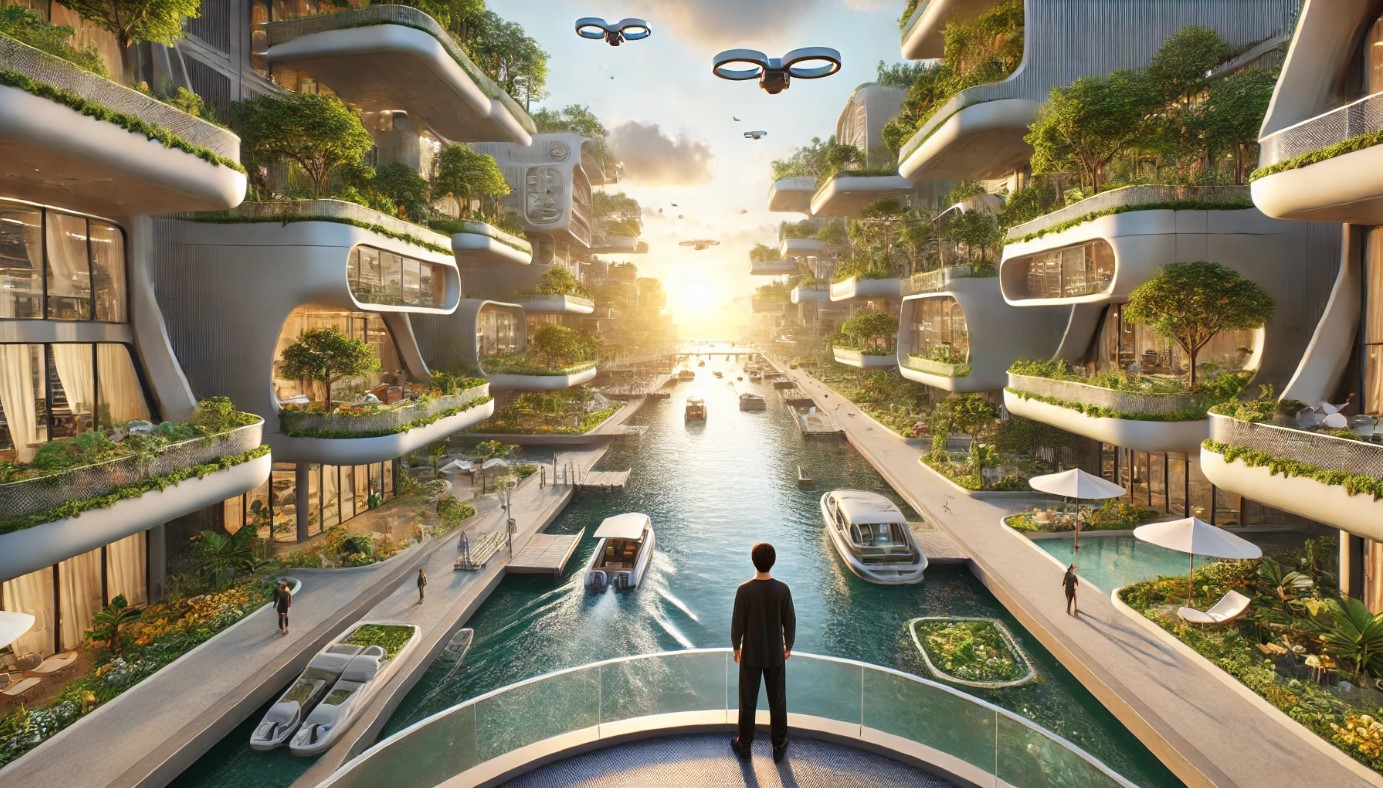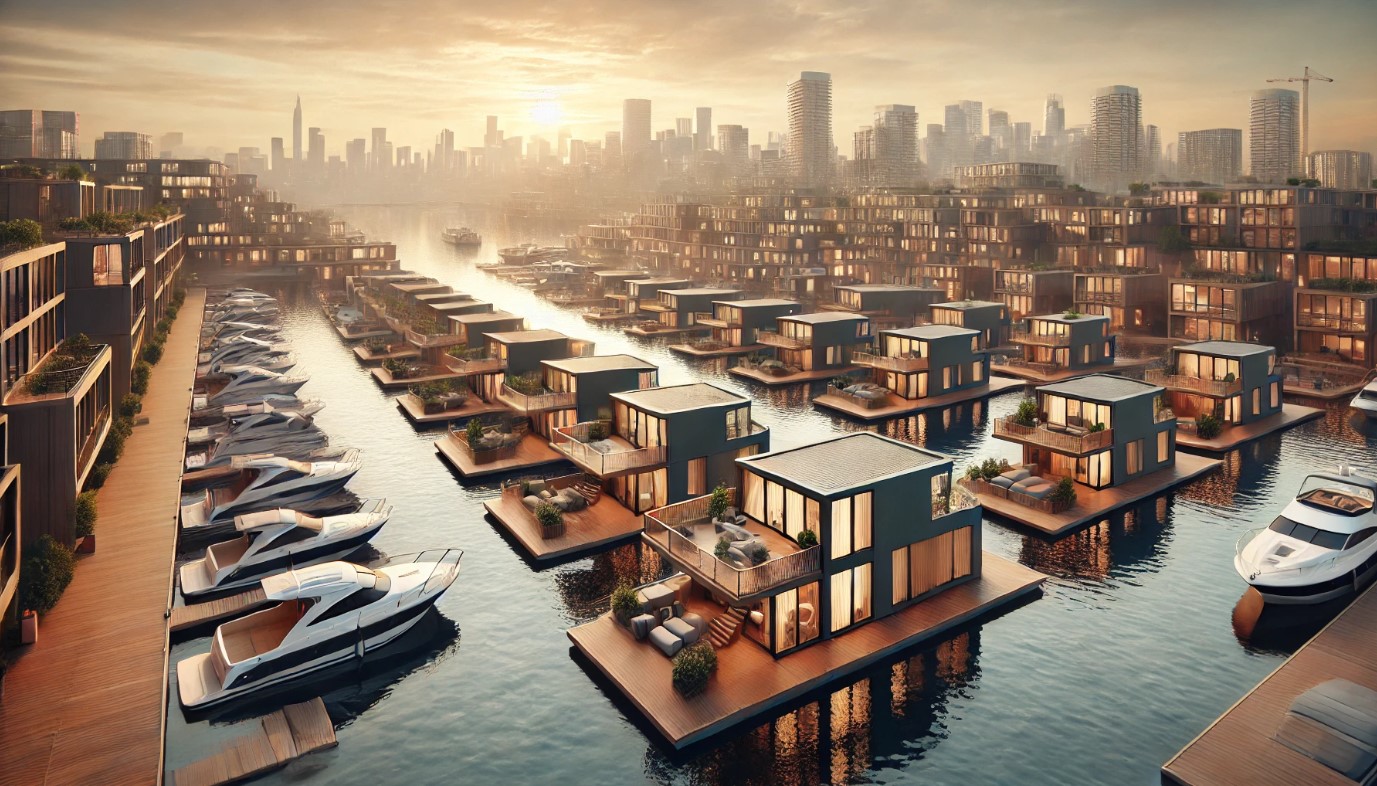As we continue to explore and develop sustainable living solutions for water-based communities, the need for comprehensive and accessible education becomes increasingly crucial. The concept of floating schools is not just an innovative architectural challenge but a significant step towards ensuring that education is both inclusive and adaptive to the unique needs of aquatic environments.

Floating Schools for Future Generations
Floating schools represent a novel approach to education and our ability to adapt to changing environments. These structures, designed to float on water, provide stable, secure, and resilient educational spaces in regions where traditional land-based schools may be impractical due to rising sea levels, flooding, or other environmental challenges.
By integrating these schools into water-based communities, we ensure that education remains uninterrupted, even in the face of environmental adversities. The design of floating schools often includes sustainable technologies, such as solar power, rainwater harvesting systems, and natural ventilation, making them self-sufficient and aligned with the eco-friendly ethos of modern floating communities.

Empowering Communities Through Education
Education is a cornerstone of community development, and for water-based communities, floating schools serve as more than just academic institutions. They become hubs of knowledge and community engagement, providing a space where children can learn, and adults can access vocational training, community meetings, and cultural activities.
Floating schools are designed to be versatile, often doubling as community centers where residents can come together to learn new skills, discuss local issues, and celebrate their unique culture. This dual functionality not only maximizes the use of space but also reinforces the sense of community among residents.

Case Study I: The Makoko Floating School in Lagos, Nigeria
One of the most prominent examples of a successful floating school is the Makoko Floating School in Lagos, Nigeria. Designed by Nigerian architect Kunlé Adeyemi and his firm NLÉ, this innovative project was developed in response to the unique challenges faced by the Makoko community, an informal settlement built over the Lagos Lagoon.

Makoko is a community of roughly 250,000 people, many of whom live in homes constructed on stilts over the water. The area is prone to flooding, and access to basic services, including education, has been a longstanding challenge. The Makoko Floating School was conceived as a prototype structure that could address these issues while also serving as a model for other water-based communities around the world.

The school was constructed using locally sourced materials, including timber and bamboo, and was designed to be environmentally sustainable, with a rooftop solar array and a rainwater harvesting system. The floating structure provided a stable learning environment for up to 100 students, offering them a safe space to learn and play, even during the rainy season.

The original Makoko Floating School, constructed in 2013, collapsed in 2016 after heavy rain. Fortunately, no one was injured, but the collapse highlighted the need for further development and refinement of the design and materials used.

Although the original structure was destroyed, the Makoko Floating School remains an iconic project in the realm of sustainable architecture and has inspired similar initiatives globally. It demonstrated the feasibility of floating schools as a solution to educational challenges in water-based communities and highlighted the importance of innovative design in addressing the impacts of climate change on vulnerable populations.
Following the collapse, Kunlé Adeyemi and NLÉ continued to evolve the concept, leading to the development of a second iteration known as the “MFS II” or “Makoko Floating School II.” This version was showcased at the 2016 Venice Biennale and was designed with improved stability, sustainability, and resilience.
As of recent updates, the MFS II has been recognized internationally as a successful prototype for floating structures in waterlogged and flood-prone areas. However, the implementation of the project in Lagos remains limited, with the original site not being rebuilt with the updated design.

Ref:
Case Study II: Floating Schools in Bangladesh
One of the most successful implementations of floating schools can be found in Bangladesh, a country where seasonal flooding and rising sea levels have historically disrupted education for thousands of children. The non-profit organization Shidhulai Swanirvar Sangstha has pioneered a model of floating schools that has become a beacon of hope for these communities.

These floating schools are constructed on boats that navigate the flooded regions, reaching students in remote areas who would otherwise be cut off from educational opportunities.

Each boat is equipped with solar-powered lights, computers, internet access, and a small library, enabling students to receive a quality education despite the challenges posed by their environment.

Rezwan and his organization Shidhulai Swanirvar Sangstha (SSS) run 26 floating schools on the rivers. The boat schools fetch the children where they live, so they can go to school even if the roads are under water.

SSS also has floating libraries and health clinics, and offers vocational training on boat schools for young women.

The impact of these floating schools has been profound. Not only have they provided uninterrupted education to over 70,000 children, but they have also contributed to reducing dropout rates and improving literacy in some of the most vulnerable areas of Bangladesh.

This innovative approach has been recognized globally, demonstrating the potential of floating schools to transform education in water-based communities worldwide.
Ref:
Case Study III: Ha Long Bay Floating School
Nestled within the serene waters of Ha Long Bay, Vietnam, a unique educational initiative has taken root—a floating school designed to serve the children of the bay’s fishing communities. These communities, whose livelihoods are intricately tied to the sea, often face challenges in accessing mainland education due to their remote locations and the nature of their work. The Ha Long Bay Floating School provides a vital solution, ensuring that education reaches even the most isolated families.

The floating school, constructed on a stable platform, is built to withstand the bay’s calm but sometimes unpredictable waters. The school is made from locally sourced materials, blending seamlessly into the natural beauty of the surrounding landscape. It includes classrooms, a small library, and spaces for extracurricular activities, all powered by solar energy to maintain sustainability.

The school’s curriculum is adapted to the unique needs of the children in this community, with a focus on both traditional subjects and lessons relevant to their maritime lifestyle. This includes environmental education, which teaches the students about the importance of preserving Ha Long Bay’s delicate ecosystem—a UNESCO World Heritage Site.

The impact of the Ha Long Bay Floating School has been significant. It has provided consistent education to children who might otherwise have been left behind, helping to reduce dropout rates and improve literacy in the area. Furthermore, the school has become a hub for community activities, fostering a stronger sense of unity among the bay’s inhabitants.

Through this initiative, the Ha Long Bay Floating School has not only contributed to the education of young minds but also to the preservation of the cultural and environmental heritage of this unique region. It stands as a testament to how innovative educational solutions can empower even the most remote communities, ensuring that no child is denied the right to learn.

Case Study IV: The Sempegua Floating School in Colombia
In the town of Sempegua, located in northern Colombia, the rainy season traditionally brings not just the nourishing rains, but also devastating floods that disrupt daily life, particularly for the region’s most vulnerable communities. Education, often the first casualty in such disruptions, found a beacon of hope in 2014 with the inauguration of the first floating school in Latin America, a groundbreaking project led by architects Andres Uribe and Lina Cataño in partnership with the United Nations Development Fund and Colombia’s National Disaster Risk Management.

Designed with both the community’s needs and the environment in mind, the school was constructed to float during the rainy season and rest on solid ground during the dry months, ensuring it remains operational year-round. The innovative design allows the school to rise and fall with the water levels, providing uninterrupted access to education for the town’s children. The schoolhouse can accommodate 60 students, and it is part of a broader vision that extends beyond education. As Uribe highlighted, the floating school is just the beginning of a comprehensive plan that includes floating houses, health centers, sports facilities, and commercial areas, aiming to transform Sempegua into a resilient and productive town despite the challenges posed by flooding.
This project has had a profound impact on the community, offering educational opportunities to children who would otherwise be unable to attend school regularly due to the flooding. Additionally, the floating school serves as a symbol of hope and innovation, demonstrating the potential of floating infrastructure to provide sustainable solutions to long-standing challenges in flood-prone areas.
Beyond its immediate educational benefits, the Sempegua Floating School has inspired a broader conversation about the future of infrastructure in flood-affected regions. The school not only prepares the next generation to tackle the challenges of their environment but also stands as a testament to human resilience and the power of innovative design in transforming lives. The success of this project has set a precedent for other communities in Latin America and beyond, paving the way for further developments in floating infrastructure that can ensure the continuity of essential services despite the forces of nature.
Ref:
https://borgenproject.org/floating-schools
Building the Future: Floating Schools as Part of the Aquatic Urbanism Vision
The integration of floating schools within water-based communities aligns seamlessly with the broader vision of Aqua Urbanism—a concept that envisions sustainable, self-sufficient cities on water. These schools are a critical component of creating a fully functional aquatic society where every aspect of life, from living to learning, is adapted to the unique challenges and opportunities presented by water-based environments.

By investing in floating schools, we are laying the foundation for future generations to thrive in these innovative communities. They ensure that education is not left behind as we move towards a future where more people may live on or near water due to climate change or population growth.

The advent of floating schools marks a pivotal moment in the evolution of water-based communities. They symbolize resilience, adaptability, and the importance of education in every setting. As we continue to expand and develop these communities, floating schools will undoubtedly play a crucial role in shaping the future of education and ensuring that no child is left behind, regardless of where they live.
Together with other initiatives like floating markets, dining experiences, and wellness centers, floating schools are key to creating a holistic, sustainable, and vibrant aquatic urbanism that meets the needs of its residents while preserving the environment.



